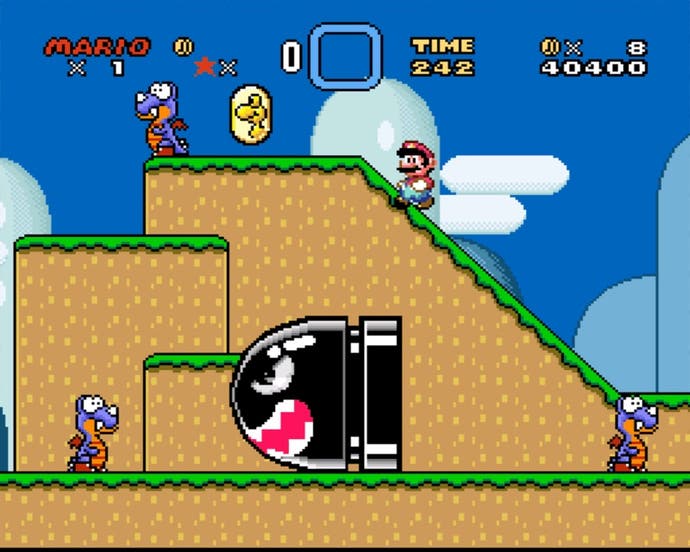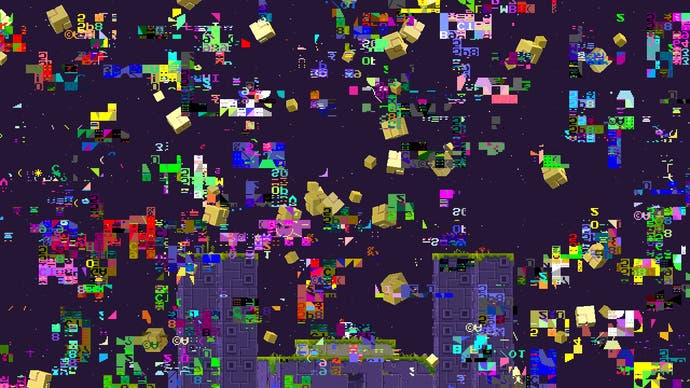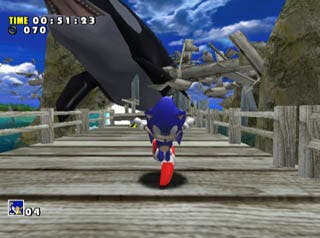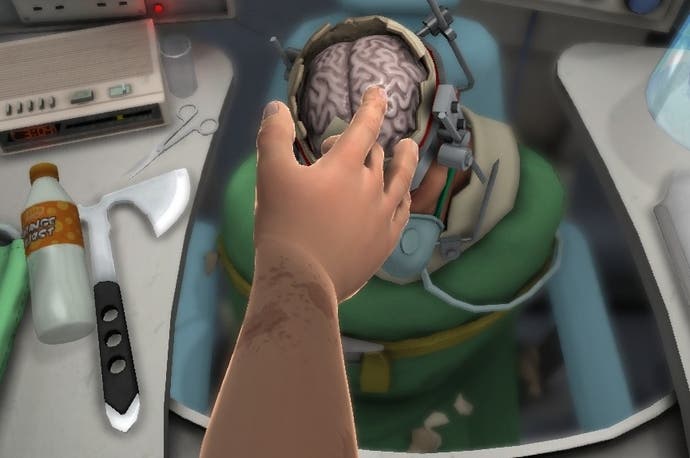What the hell is that?
Is the PS4 launch line-up a victim of the shifting nature of video game spectacle?
If you're launching a console - like Sony is at the moment, right - one of the key phrases you're probably hoping to hear when people first set eyes on any of your new games is: What the hell is that? In fact, what the hell is that? (said with an admiring tone, mind) is worth tens of millions of pounds to platform holders and game designers alike. It gets people headed down the shops or clicking away on PayPal. It's the sound of audiences seeing something they have to have.
And, I'm sad to report, despite the powerful new hardware, despite the 1080p and the 60fps, what the hell is that? has yet to be uttered around the PS4 in the Eurogamer office. There's been quiet admiration at some of Killzone's prettier vistas, there's been a bit of chatter about voxels as Resogun's levels shred themselves under laser fire, and there's even been a moment of sad reflection to mark the passing of FIFA's peculiar shorts-flapping bug - where's Wilfred Owen when you need him, I guess? - but no jaws have hit the ground, and nobody's been moved to mouth that special, cash-register-ringing phrase.

This has got me thinking: when was the last time I heard someone say it about a video game? When did I hear it - or something like it - in the last year? I'm resolutely un-jaded about games, and there have been plenty of decent candidates, too: the bobbing, creaking, sky-city of BioShock Infinite, the collapsing mega-towers of Battlefield 4, TitanFall's vast mechs with their strangely endearing robot hands. None of them made the cut, though. The last time I heard, "What the hell is that?" in the office regarding something that hadn't been discovered at the bottom of a very old coffee cup? The last time I turned round from the game I was playing to see that a crowd had gathered?
Surgeon Simulator.
Okay, Surgeon Simulator is quite a weird game. You control an arm that's attached, theoretically, to a scrubbed-up MD type, and you try and perform life-saving acts like heart transplants or brain swaps in a world filled with clutter and physics-enabled impedimenta. It's mad to play and even madder to look at - and that's the whole point, isn't it? Over the last few years, the nature of the good old-fashioned wow factor, and the very life-blood of what the hell is that? moments has changed. Maybe PS4's just a tidy, capable console that was birthed at the wrong time.

Historically, I would argue, the wow factor has always been linked to hardware launches because of things like graphics. You couldn't believe Alex Kidd was playing on a home machine, or that Mario World's bosses could twist around like that, powered by the glory of Mode 7. Swoon. In Europe, the PlayStation had WipEout, which looked cooler and more futuristic - and more grown-up - than any game yet seen, but that too had a lot to do with how smooth it was, and how fast, how shiny. I remember going to a friend's house and getting very excited about the grass in Halo: Combat Evolved. I remember turning up a few years later and being dazzled by the warping lines and spinning catherine wheels of Geometry Wars. All wows. All what the hells. All driven, to a large extent, by a sudden leap in graphical fidelity and complexity.
Somewhere along the line, though, things have started to shift. Maybe it's the diminishing visible returns of the hardware improvements. Maybe it's the rise of the indies. For whatever reason, a lot of people have grown a bit blasé about how amazing a game looks from a purely technical standpoint. We've started to find more impact in a striking art style, or in a crazy new idea. I remember being totally flattened by Tiny and Big last year, for example: not because it was doing anything astonishing with my PC's graphics card, but because it was providing me with amazing tools to splice up the environment and lob it around. That was a wow, as was the first glorious rotation in Fez, the first wolf attack in Sang-Froid, the first time my sodding wristwatch went flying in Surgeon Simulator.

And surely this is pretty cool, right? The games that have lasted have always been about ideas, anyway - ancient tech marvels like Doom looked pretty, but id Software was also laying the template for a new kind of action game, while Super Mario World had pleasures that lay far beyond the fact it could turn sprites around. Maybe we're just getting better at spotting what's really important in games from an early stage. Video games will never lose their ability to generate wows, but the things that initially get to us don't have to stay the same.
So while the PS4's launch line-up still looks as good as you might reasonably hope for from a leap in hardware at this point in time, the slight disappointment - as of yet - comes from what we get up to in these games. Knack's a corridor linking dull arenas, Killzone's stealth knife seems very pretty as you wriggle through vents, but it's still just a knife, and they're still just vents. For the machine's first real what the hell is that?, perhaps you have to look elsewhere.
Perhaps you have to look back to the Eurogamer Expo, in fact, where I found a small crowd gathered around a screen in the Sony booth, absolutely dazzled by what they were watching - Octodad: The Dadliest Catch. An attractive game, for sure, but nothing special in the looks department. An attractive game in which you play an octopus, stuffed into a tuxedo, trying to get by in a world designed around humans.
Seriously, what the hell is that?

